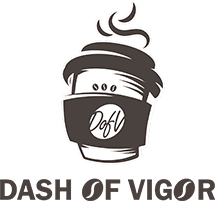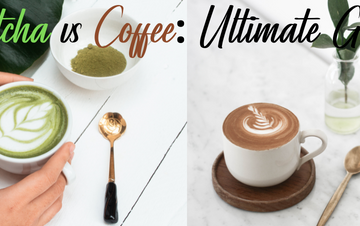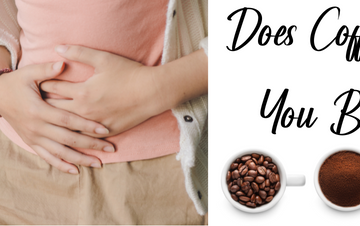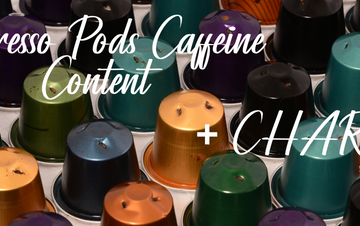Does Cold Brew Have More Caffeine?
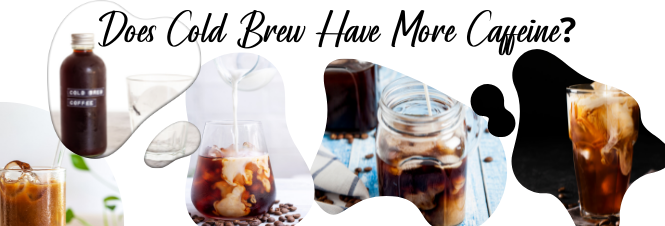
Have you ever wondered does cold brew have more caffeine? Well, the short answer to this question is YES. But then it depends on what are comparing it.
Mostly the high caffeine content comes from the preparation technique of this type of coffee. You can also find best cold brews at Starbucks as well.
Keep reeding to find out all the secrets.
Enjoy 🙂
TABLE OF CONTENTS:
- What is Exactly Caffeine?
- What Are the Most Appropriate Dosages?
- Does Cold Brew Have More Caffeine?
- Is The Brewing Process Important in This Case?
- The Brewing Process of Cold Brew Coffee
- Cold Brew vs. Espresso Flavors
- Comparing The Two Coffees’ Flavor Profiles
- Is There a Difference in Flavor Between the Two Coffees Based On Their Origin?
- What Is the Importance of Cup Size?
- What If You Wait a Few Minutes for Your Espresso to Cool Down?
- Does Cold Brew Have More Caffeine Than Espresso?
- Does Nitro Cold Brew Have More Caffeine?
What is Exactly Caffeine?
Caffeine is a naturally occurring substance. It has a pronounced influence on the human body. More than 60 items include coffee, tea, cola, cocoa, guarana, and yerba mate.
The central nervous system, heart, muscles, and regulatory centers of blood pressure are all stimulated by the effects of caffeine. Caffeine may elevate blood pressure. However, regular caffeine users may not experience this impact. When taken as a “water pill,” caffeine may increase the amount of water that passes through the body.
People typically utilize caffeine for mental alertness, headaches, migraine, athletic performance, memory, and obesity. Patients also use it for asthma, gallbladder disease, ADHD, low blood pressure, depression, etc. Still, there is no good scientific evidence to support most of these other uses.
What Are the Most Appropriate Dosages?
As I already mentioned, several foods and beverages contain caffeine, such as coffee, tea, and chocolate. The caffeine content in a standard mug of coffee ranges from 95 to 200 milligrams. Caffeine levels in a cup of black tea range from 25 to 110 milligrams. Each cup of green tea contains between 30 and 50 milligrams of caffeine. Caffeine items that are highly concentrated or pure are harmful to one’s health. By accident, people might readily consume dosages that are much too high. I suggest you avoid these products to protect your body and health.
As a medicine, adults have most often used caffeine in doses of 50-260 mg by mouth daily. Speak with a doctor to determine what type of product and dose might be best for a specific condition.
Does Cold Brew Have More Caffeine?
I hope you have tried cold brew and espresso if you are a coffee fan. If you haven’t tried one of these beverages yet, this is your opportunity. This way, you can complete an informed choice when going out to grab a cup of coffee. But the general question is: does cold brew have more caffeine than espresso? I suggest you check the strongest coffee at Starbucks and other cafeterias.
Cold-brew is the most robust-tasting of the two types of coffee I stated above. Because cold-brew coffee has more caffeine than espresso, this is the reason. You get a boost from the caffeine content. That is why it will feel like cold brew is more robust than espresso.
I will explain why this is happening and how this can change depending on the coffee’s characteristics. And the essential question is: why does cold brew have more caffeine?
Is The Brewing Process Important in This Case?
I will compare the brewing processes of the cold brew coffee and espresso. They differ from each other, and this is one of the reasons to feel cold brew coffee is more robust than espresso.
The Brewing Process of Cold Brew Coffee
On the other hand, the cold brew requires another degree of brewing. Different circumstances need a 12- to 24-hour infusion period for ground coffee. As a result, the length of time you brew your coffee and your method will impact how it tastes.
The cold-brew coffee’s water will steep with the ground coffee for a specific time. During this period, the ground coffee beans will saturate with cold water. I usually soak it for my cold brew recipe for around 15 hours. At this time, the cold water will have extracted enough coffee flavor to produce an excellent cold-brew coffee. The coffee will get somewhat bitter after steeping for a more extended time. This happens after soaking coffee for up to 24 hours.
Cold Brew vs. Espresso Flavors
You’ll need a finely ground coffee to get the most flavor out of your espresso. The hot water will be pushed through the ground coffee at 9 bars. It will take around 30 seconds for all of the tastes to meld together, leaving you with a solid cup of coffee to enjoy.
A Moka pot may also be used to make espresso. I generally use this machine at home. It’s also a lot of fun to make coffee this way. Fill your Moka pot halfway with water and finely ground coffee. The brewing procedure in the Moka pot will begin.
While comparing the taste profiles of the two, the first thing that sprang to mind was the espresso’s strong notes. Before sipping the cold brew I brewed the other day, I first tasted the espresso. The sour and bitter flavors in the cold brew were more notable than in the regular espresso.
Comparing The Two Coffees’ Flavor Profiles
While comparing the two coffees, I noticed that the cold brew had a little nutty and chocolatey flavor. On the other hand, the espresso had a considerably more delicate taste.
When brewing espresso at home, the proper extraction might be challenging. Sometimes, the espresso may taste sour or even harsh. As a result, you must be pretty exact.
Is There a Difference in Flavor Between the Two Coffees Based On Their Origin?
When it comes to creating a good cup of coffee, the provenance of the beans is crucial. Some nations may not provide the same robust coffee bean as others.
However, it has different flavor qualities. The temp at which the coffee beans were roasted by the coffee roaster is much more crucial, but let me explain why.
The coffee roaster will receive a set of fresh coffee beans. After that, the coffee beans will be roasted. The coffee roaster will determine the temperature at which the coffee beans are heated. This will result in a blond, light, medium, or dark roast for the coffee beans.
The provenance has an impact on the flavor characteristics. Not all coffee beans are made equal. It’s also vital to have a processing altitude.
Coffee is grown all over the globe, with each region having its own particular taste characteristic. Some coffee beans have a sweeter flavor than others, and some even have a somewhat acidic flavor.
What Is the Importance of Cup Size?
Cold-brew coffee will probably be served with ice cubes, making it a thirst-quenching beverage. The cold brew coffee will most likely take longer than the espresso.
I usually always prepare a cup of cold brew coffee for one serving when I make cold brew coffee at home. I’ll be able to enjoy this drink for a more extended amount of time this way. Because of its size, I know I’ll finish it in two gulps while brewing espresso.There isn’t always anything wrong with the more miniature drink. I prefer a more giant cold brew coffee in rare instances, such as sitting in the sun. I’ll probably keep the espresso for another occasion. If you don’t know your cup’s size, you can check the guide for Starbucks cup sizes.
What If You Wait a Few Minutes for Your Espresso to Cool Down?
Coffee that has been chilled has a strong flavor. Have you ever drunk coffee and noticed how powerful the last gulp of coffee at the bottom of the cup tastes?
This is because the coffee particles will sink to the bottom of your cup and remain there until you drink the last drop of your coffee.
The same thing occurs when you forget about coffee that has been cold for an extended period. Even after the brewing is finished, the tastes will continue to develop. The coffee will taste much stronger now than it did just a few minutes ago.I once waited for my espresso to chill before finishing it. It has a robust flavor. It’s almost like drinking a more acidic ristretto. You can check the differences between espresso and ristretto and how to prepare a ristretto at home.
Does Cold Brew Have More Caffeine Than Espresso?
Cold brew coffee has more caffeine than espresso. You need twice as many coffee beans to prepare cold brew coffee, sometimes even three times as much.
You’ll most likely be preparing a cold-brew extract. Water, milk, or milk substitutes may dilute this cold-brew extract. You may make your cold-brew coffee with the same caffeine concentration as espresso by shortening it.
However, this all depends on your personal preference. I like to drink my cold-brew coffee strong. But I know some of you don’t feel the same about it. You’ll need to figure out how strong you want your cold-brew coffee to be. But don’t worry! It’s a fun journey.
Does Nitro Cold Brew Have More Caffeine?
Cold brew coffee, stronger than espresso, has the same taste qualities as a nitro cold brew. Compared to espresso, nitro cold brew is stronger. It has a distinct taste profile than espresso since it is made with compressed gas, yet it is still stronger than espresso.
Even though it is created in the same manner as ordinary cold brew, the difference is that the nitro cold brew process uses compressed gas.
You can’t go wrong with this drink because of the high-pressure gas that makes it so light and fluffy. The base for nitro cold brew is a standard cold brew.
References:
- Fuller, M., & Rao, N. Z. (2017). The Effect of Time, Roasting Temperature, and Grind Size on Caffeine and Chlorogenic Acid Concentrations in Cold Brew Coffee. Scientific reports, 7(1), 17979. https://doi.org/10.1038/s41598-017-18247-4
- Temple, J. L., Bernard, C., Lipshultz, S. E., Czachor, J. D., Westphal, J. A., & Mestre, M. A. (2017). The Safety of Ingested Caffeine: A Comprehensive Review. Frontiers in psychiatry, 8, 80. https://doi.org/10.3389/fpsyt.2017.00080
- Cordoba, N., Pataquiva, L., Osorio, C., Moreno, F., & Ruiz, R. Y. (2019). Effect of grinding, extraction time and type of coffee on the physicochemical and flavour characteristics of cold brew coffee. Scientific reports, 9(1), 8440. https://doi.org/10.1038/s41598-019-44886-w
- Kyroglou, S., Thanasouli, K., & Vareltzis, P. (2021). Process characterization and optimization of cold brew coffee: effect of pressure, temperature, time and solvent volume on yield, caffeine and phenol content. Journal of the science of food and agriculture, 101(11), 4789–4798. https://doi.org/10.1002/jsfa.11125
- Rao, N. Z., Fuller, M., & Grim, M. D. (2020). Physiochemical Characteristics of Hot and Cold Brew Coffee Chemistry: The Effects of Roast Level and Brewing Temperature on Compound Extraction. Foods (Basel, Switzerland), 9(7), 902. https://doi.org/10.3390/foods9070902
- Rao, N. Z., & Fuller, M. (2018). Acidity and Antioxidant Activity of Cold Brew Coffee. Scientific reports, 8(1), 16030. https://doi.org/10.1038/s41598-018-34392-w
- Claassen, L., Rinderknecht, M., Porth, T., Röhnisch, J., Seren, H. Y., Scharinger, A., Gottstein, V., Noack, D., Schwarz, S., Winkler, G., & Lachenmeier, D. W. (2021). Cold Brew Coffee-Pilot Studies on Definition, Extraction, Consumer Preference, Chemical Characterization and Microbiological Hazards. Foods (Basel, Switzerland), 10(4), 865. https://doi.org/10.3390/foods10040865
